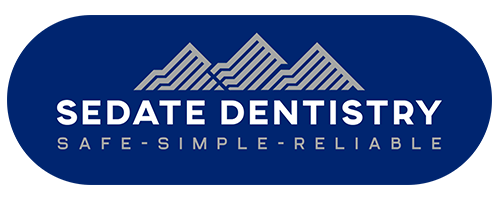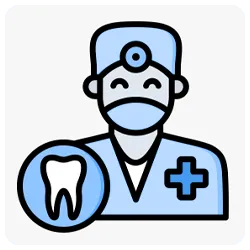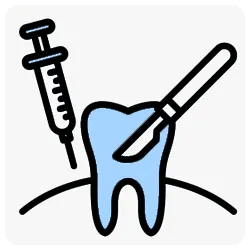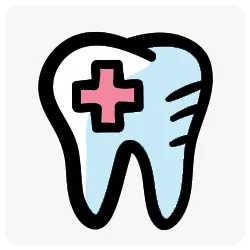
What Is Sedation Dentistry? Everything You Need to Know
Sedation dentistry uses proven medications and monitoring to calm anxiety, reduce awareness of unpleasant sensations, and help you complete needed treatment safely. This guide breaks down sedation options, who benefits, what happens on the day of your visit, and how modern documentation and vitals tracking protect patients from screening through discharge.
Table of Contents
What Is Sedation Dentistry? Everything You Need to Know
What Sedation Dentistry Actually Means
Who Benefits Most From Sedation
The Sedation Continuum in Plain Language
Your Options: Nitrous, Oral, and IV
Safety First: How Teams Keep Sedation Predictable
Documentation That Proves Safety
What a Sedation Appointment Looks Like
Risks and Side Effects to Understand
Costs, Insurance, and Transparency
Choosing a Sedation Dentist Near You
Special Populations and When Settings Change
Can I eat before my appointment?
What Is Sedation Dentistry?
Sedation dentistry is a set of tools that helps patients relax while remaining safe and responsive. Sedation pairs with local anesthesia to control pain and with continuous monitoring to track your breathing, heart rate, and blood pressure. This comprehensive overview explains the choices—nitrous, oral, and IV—so you can decide with your dentist which approach best fits your care, health history, and comfort level.
What Sedation Dentistry Actually Means
Sedation dentistry uses minimal to moderate medications to reduce fear and increase cooperation without making you unconscious like hospital general anesthesia. You can usually answer questions and follow instructions, and your dentist tailors sedation depth to the procedure and your needs. Teams document each step in sedation visit records creation software so your chart shows exactly what happened and when.
Who Benefits Most From Sedation
Sedation is especially helpful if you avoid dental visits because of fear, have a strong gag reflex, struggle with prolonged appointments, or need several procedures in one visit. Patients with sensory sensitivities or prior traumatic experiences also benefit from calmer, more predictable sessions supported by standardized documentation in Sedation dentistry software.
The Sedation Continuum in Plain Language
Sedation exists on a spectrum from minimal to deep. Most dental care uses minimal or moderate levels so you remain responsive and breathe on your own. Your team chooses the lowest effective level, then monitors and documents your response.
Your Options: Nitrous, Oral, and IV
All three approaches can be safe and effective when matched to the situation and documented consistently.
Nitrous Oxide (Laughing Gas)
Nitrous provides fast, adjustable relaxation. You inhale a blend through a small mask; effects start within minutes and fade quickly after oxygen at the end. Many patients can resume normal light activity once cleared. Practices record concentrations and recovery automatically with Sedation visit record software.
Oral Sedation
Oral medications reduce anxiety for longer visits. Your dentist times the dose so peak effects match the most stimulating parts of treatment. Because absorption varies, teams watch vitals closely and capture dose, time of ingestion, and discharge criteria in Oral sedation visit records software.
IV Sedation
IV sedation provides minute-to-minute control. The team can adjust depth quickly and respond to stimulation spikes during surgery or complex restorative work. Clinical flow—induction, maintenance, and recovery—is documented in IV sedation visit records software.
Safety First: How Teams Keep Sedation Predictable
Safety is a system that includes screening, monitoring, and documentation.
Screening and Planning
Your dentist reviews medical history, medications, allergies, and prior sedation experiences, and performs a focused airway assessment. The plan addresses fasting, escorts for oral/IV sedation, and post-op instructions. With Sedate Dentistry, all of these things are added to a cloud-based online application that integrates directly into your vitals monitor with always accurate streamlined real-time data to abide by the dental sedation compliance rules, set forth to help protect providers and patients alike.
Monitoring and Response
During treatment, the team tracks oxygen saturation, heart rate, blood pressure, and respiratory rate; many practices add capnography for deeper cases. A dedicated team member watches the monitors and the patient, ready to adjust oxygen, positioning, or medications as needed.
Documentation That Proves Safety
Digital records time-stamp vitals, doses, and events. Standardized logs reduce omissions and make quality review easier. Practices moving from paper often compare the benefits of going from manual paper sedation records to Sedate Dentistry Digital Sedation Visit Records. Book a Free Sedate Dentistry Demo today or choose form Yearly or Monthly Plans with unlimited patients and transparent Pricing.
What a Sedation Appointment Looks Like
Sedation visits follow a predictable path so patients know what to expect.
Before You Arrive
You receive written instructions about food, fluids, medications, and escorts. You bring your medication list and any physician clearances. Anxiety-prone patients benefit from reading How sedation dentistry helps avoid dental anxiety ahead of time.
On Arrival
The team confirms consent, places monitors, and records baseline vitals. For nitrous, you’ll feel calmer in minutes. For oral sedation, the team confirms timing. For IV, the clinician establishes access and titrates to the target level.
During Treatment
You remain relaxed and responsive. The team tracks vitals continuously, narrates steps briefly, and pauses if you request it. Local anesthesia controls pain while sedation supports calm and cooperation.
Recovery and Discharge
The team observes you until you meet objective criteria. Nitrous often allows same-day light activity once cleared. Oral and IV sedation require no driving the same day and an adult escort. For specific driving rules, read Can you drive home yourself after sedation dentistry. For a full aftercare plan, see our Post Dental Procedure Sedation Recovery Plan.
Risks and Side Effects to Understand
All medical treatment carries risk, but dental sedation has a strong safety record when protocols are followed. Mild effects like drowsiness, light-headedness, or nausea can occur and usually pass with observation. The team prepares for rarer events with oxygen, suction, airway adjuncts, and reversal agents. If you want the evidence perspective, check out "Are sedation dental procedures safe?"
Costs, Insurance, and Transparency
Sedation fees vary by modality and time. Ask for a written estimate that separates dental treatment from sedation or facility fees. Clear documentation helps with pre-authorization and claims. Practices using digital records produce cleaner estimates and post-op notes, which reduces back-and-forth.
Choosing a Sedation Dentist Near You
The right provider explains options clearly, shows you monitoring and emergency equipment, and can display a sample sedation record. Follow our tips to find the right Sedation dentist near you to compare practices on training, screening, monitoring, and documentation.
Special Populations and When Settings Change
Patients with complex medical conditions, severe sleep apnea, or special sensory needs may require deeper levels of sedation or general anesthesia in a surgical center. Your dentist collaborates with medical providers to match the environment to the level of care needed. For a side-by-side comparison of office-based sedation and hospital anesthesia, read Sedation vs general anesthesia.
Frequently Asked Questions
Will I be asleep?
You’ll be relaxed and responsive unless a deeper plan is specifically arranged. Most office-based sedation is minimal to moderate.
Can I eat before my appointment?
Instructions vary by modality and timing. Follow your written pre-op guidance exactly so your visit stays on schedule.
Can I drive afterward?
Nitrous often allows driving once you recover and your dentist clears you; oral and IV sedation require an adult escort and no driving the same day. See Can a patient drive home after sedation dentistry.
What if I hate needles?
Nitrous can start before local anesthesia, making injections feel like pressure instead of pain. Many patients tolerate injections well once their anxiety decreases.
What if I don’t remember much after the visit?
Some medications reduce memory of the procedure, which many patients prefer. Your dentist will review expected effects during consent.
Wrapping Up
Sedation dentistry helps anxious or complex cases move forward safely by pairing the right medication with continuous monitoring and consistent documentation. When teams standardize screening, vitals tracking, and recovery criteria, patients gain calmer appointments and clinicians gain clearer, more defensible records. If you’ve been putting off care, a well-run sedation program can help you get healthy, comfortably and confidently.


















